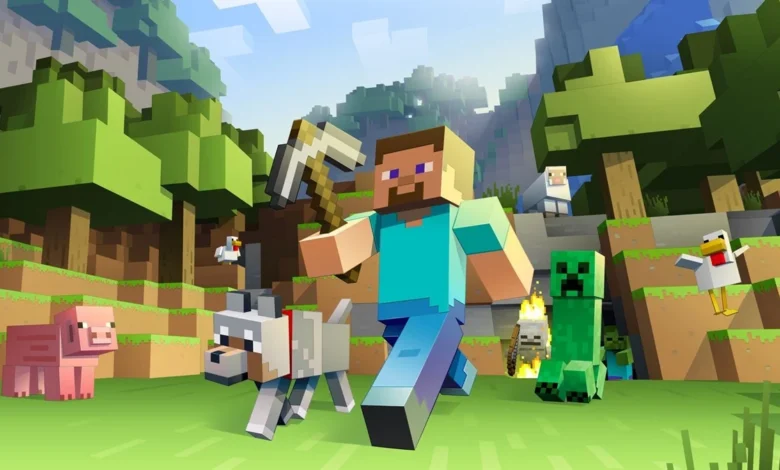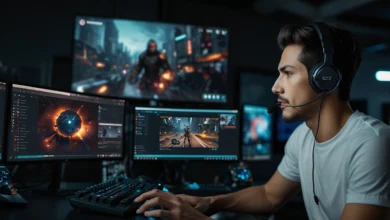Is Minecraft Pocket Edition Java Or Bedrock?

In the ever-evolving world of Minecraft, players often find themselves navigating the choice between two primary editions: Java and Bedrock. Each version offers a unique gaming experience, and understanding the differences between them is crucial for every Minecraft enthusiast. Let’s delve into this topic and shed light on the characteristics that set Minecraft Pocket Edition apart. This Android Guide will provide valuable insights into the distinct features and gameplay elements that make Minecraft Pocket Edition a standout option for players on the Android platform.
What Is Minecraft Pocket Edition: Bedrock Or Java?
Minecraft Pocket Edition is considered part of the Bedrock version of Minecraft, not the Java version. The Pocket Edition was originally developed for mobile devices and later expanded to other platforms like Windows 10 and Xbox One.
- Bedrock is coded in C++, while Java is coded in Java. This allows Bedrock to run better on mobile devices.
- Bedrock supports cross-platform play between mobile, Windows 10, Xbox One, and Nintendo Switch. Java only runs on PCs.
- Bedrock has some differences in mechanics and interface from Java. For example, the redstone component behaviour is slightly different.
- Java gets updates and new features from Mojang first, while Bedrock lags behind. However, they eventually get the same major updates.
- Bedrock is purchasable through the platform store like the App Store or Microsoft Store. Java is only available through the Minecraft website.
So in summary, Minecraft Pocket Edition is part of the Bedrock codebase and platform availability, not the original Java version. It allows play across mobile and console platforms rather than just PC.
What’s the difference between Minecraft Java and Bedrock Edition?
Minecraft Java Edition and Bedrock Edition are two different versions of the popular sandbox game Minecraft. They share many similarities, but there are also some key differences between the two.
- Platform Compatibility:
- Java Edition: Java Edition is primarily available for Windows, macOS, and Linux operating systems. It is not compatible with consoles or mobile devices.
- Bedrock Edition: Bedrock Edition is available on multiple platforms, including Windows 10, Xbox, PlayStation, Nintendo Switch, iOS, Android, and more. It offers cross-platform play, allowing players on different devices to connect and play together.
- Performance and Optimization:
- Java Edition: Java Edition can be demanding on hardware and may require a more powerful computer for optimal performance. It is known for occasional performance issues and may not run as smoothly on lower-end PCs.
- Bedrock Edition: Bedrock Edition is optimized for various platforms, including mobile devices and consoles, making it run more efficiently across a wider range of hardware. It generally offers smoother performance, even on less powerful devices.
- Modding Support:
- Java Edition: Java Edition has robust modding support and a large modding community. Players can use mods to customize their gameplay, add new content, and alter the game’s mechanics to a greater extent.
- Bedrock Edition: Bedrock Edition has limited modding capabilities compared to Java. Modding support is mainly available through add-ons, which are less flexible than traditional Java mods. The modding community for Bedrock is smaller in comparison.
- Updates and Snapshot Releases:
- Java Edition: Java Edition receives snapshots, which are early preview versions of upcoming updates. Players can test new features and provide feedback before official releases.
- Bedrock Edition: Bedrock Edition generally receives updates simultaneously across all platforms. While it may not have snapshots, it benefits from consistent and synchronised updates.
- Redstone Mechanics:
- Java Edition: Redstone mechanics in Java Edition are considered more complex and versatile. Players can create intricate contraptions and logic systems using redstone.
- Bedrock Edition: Bedrock Edition’s redstone mechanics are simplified compared to Java. Some contraptions and redstone devices that work in Java may need adjustments to function correctly in Bedrock.
- Community Servers and Realms:
- Java Edition: Java Edition allows players to set up and join custom community servers, offering diverse gameplay experiences. It also has Realms, Mojang’s official subscription-based server hosting service.
- Bedrock Edition: Bedrock Edition features Realms for cross-platform multiplayer, but the availability of custom community servers is more limited compared to Java Edition.
How To Get Texture Packs For Minecraft Java Edition?
Obtaining and installing texture packs in Minecraft Java Edition is a relatively straightforward process, especially if you’re playing on Minecraft Android TV. Here are the steps to get texture packs for Minecraft Java Edition:
- Find a Texture Pack:
Start by browsing various websites and online forums to find a texture pack that you like. There are many websites dedicated to hosting Minecraft texture packs, such as Planet Minecraft, CurseForge, and the official Minecraft forum.
- Download the Texture Pack:
Once you’ve found a texture pack you want to use, click on the download button or link provided on the website. Make sure you’re downloading a texture pack that is compatible with the version of Minecraft Java Edition you’re using.
- Locate Your Minecraft Folder:
You’ll need to access your Minecraft game files. To do this, open your file explorer (Windows Explorer on Windows, Finder on macOS), and navigate to the following directory:
Windows: %appdata%\.minecraft
macOS: ~/Library/Application Support/minecraft
- Access the Resourcepacks Folder:
Inside the .minecraft folder, you should see a folder called “resource packs.” This is where you’ll place your downloaded texture pack files.
- Install the Texture Pack:
Move the downloaded texture pack file (it’s usually in .zip format) into the “resourcepacks” folder. You can do this by simply dragging and dropping the file from your downloads folder into the “resourcepacks” folder.
- Activate the Texture Pack in Minecraft:
- Launch Minecraft Java Edition.
- In the main menu, click on “Options” or “Resource Packs” (the exact wording may vary depending on your Minecraft version).
- In the Resource Packs menu, you should see a list of available texture packs, including the one you just added. Click on the arrow button to move the texture pack from the left column (Inactive) to the right column (Active).
- Click the “Done” button to apply the changes.
Conclusion
In conclusion, Minecraft enthusiasts have the option to explore two primary editions of the game: Java Edition and Bedrock Edition. While both editions offer a captivating sandbox experience, they differ significantly in terms of platform compatibility, performance, modding support, update schedules, redstone mechanics, and multiplayer options.




